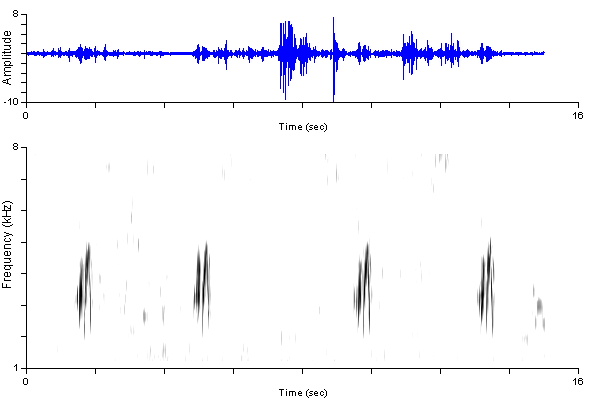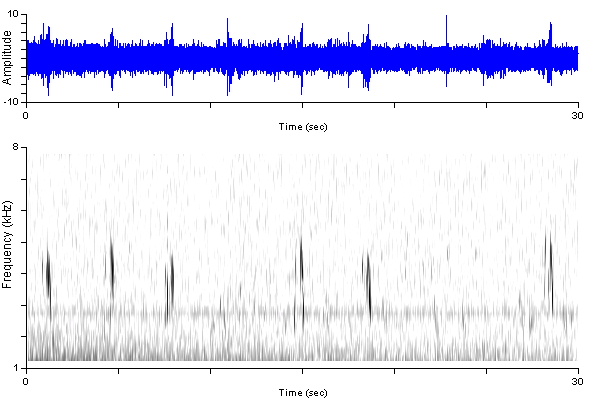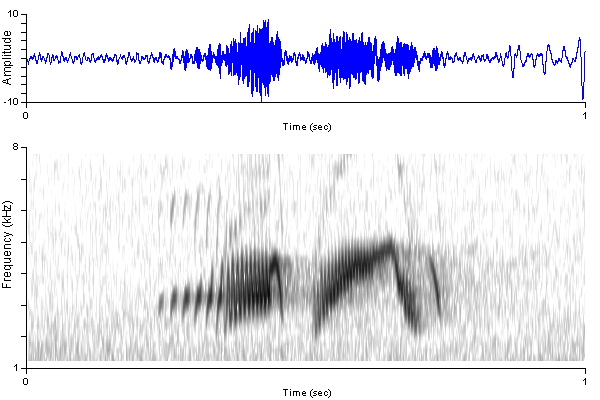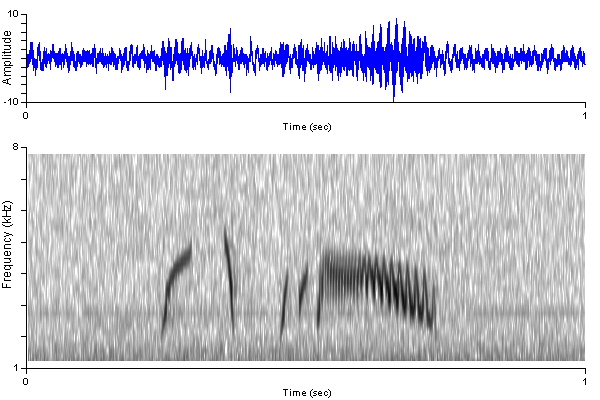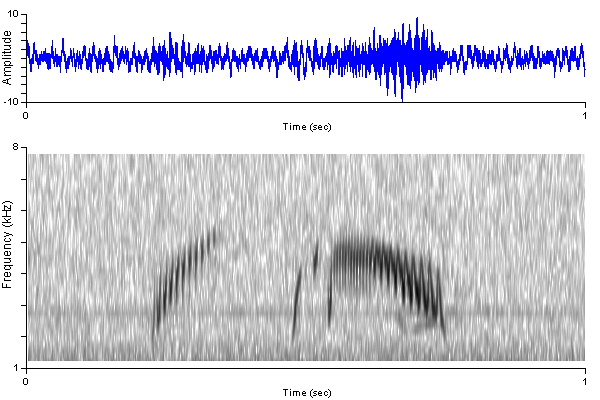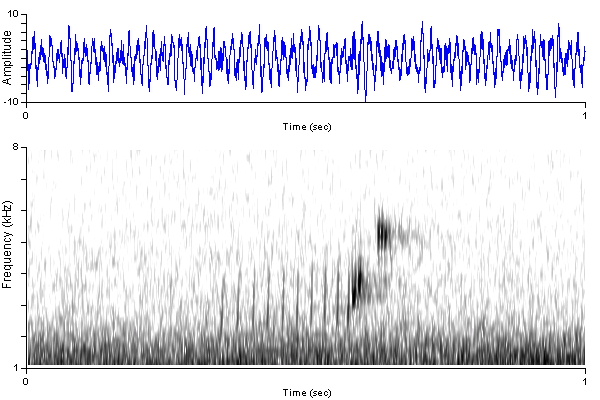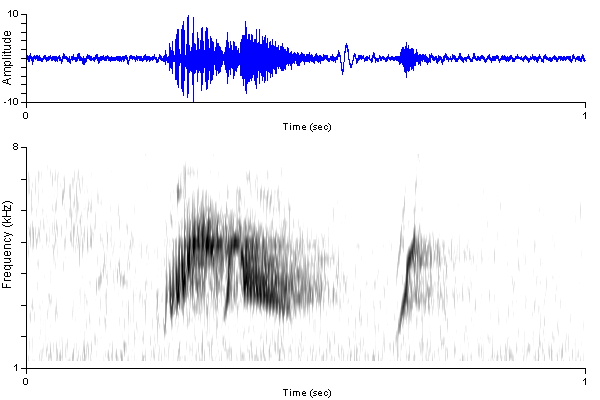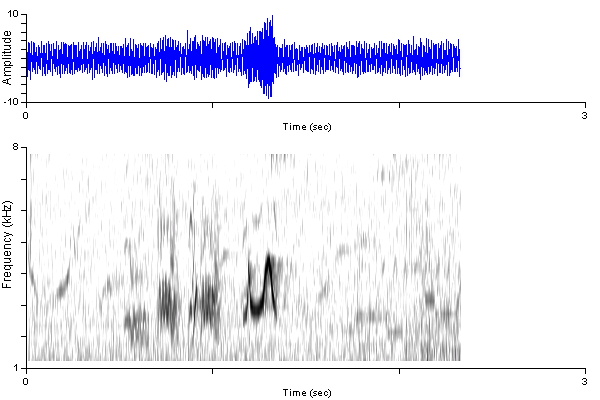SOUNDS
|
2. WIFL SONG : 30 second song sequence Contrast the variety of this song performance with the monotony of the Alder Flycatcher 15-sec cut. The sequence of songs is: Fitzbew, Fizzbew, Fitzbew, Fizzbew, Fitzbew, Creet, Fizzbew. The Creet is shorter than the others. It appears 22 sec into the cut. Missoula County, MT; Date 06-25-1994. |
|
3. ALFL Feebeeo Feebeeo is the sole song-type of the Alder Flycatcher. Note that both main notes are mostly ascending. The second note drops off at the end, and it is followed by a faint, brief, rapidly descending note, which is often not heard. Listening to a Feebeeo, the main impression is "up-up" for the frequency trend, with a hint of a down-turn at the end. Listening to Willow's Fitzbew" or Fizzbew the impression is "up-down."
Despite these differences, the easiest way to tell singing Alders from singing Willows is the variety of the
song sequence, a single song-type for the Alder, usually three types for the Willow. Alder might throw in something like the
complex call at the bottom of this page.
Haywood County, NC; Date 07-26-2006.
|
|
7. WIFL Zweeoo-Whit This sample includes a Zweeoo call followed by a call note, Whit. They are not always given together, and in fact the Zweeoo and the Whit here may have been given by two different birds. This behavior is typical of a nesting pair and probably is indicative of alarm on their parts. The Whit here helps seal the identification as Willow Flycatcher, as no other call-types were heard. Alder has a Pip rather than Whit call note, which looks quite different spectrographically. Visually, these birds were Traill's, i.e., not likely to be any other empid. The form of Willow Zweeoo is different from that of Alder Zweeoo. The differences have been documented by others with birds identified by song.
The Willow's Zweeoo call may cause some confusion among observers who know the advertising
songs of the two species, but don't know about this vocalization. Willow has other calls
as well. In areas wehere Alders are not expected, it's best to insist on a string of
Feebeeos to call a bird an Alder. A recording will almost always make identification
easy via spectrographic visualization.
Latah County, IT; Date 06-08-2006.
|
All recordings presented here are the property of the recordists and are used with permission. The name of the recordist appears below each spectrogram.
Spectrograms, text, design, and source code are the property of AppliedBioacoustics. © 2007, 2008 AppliedBioacoustics.
